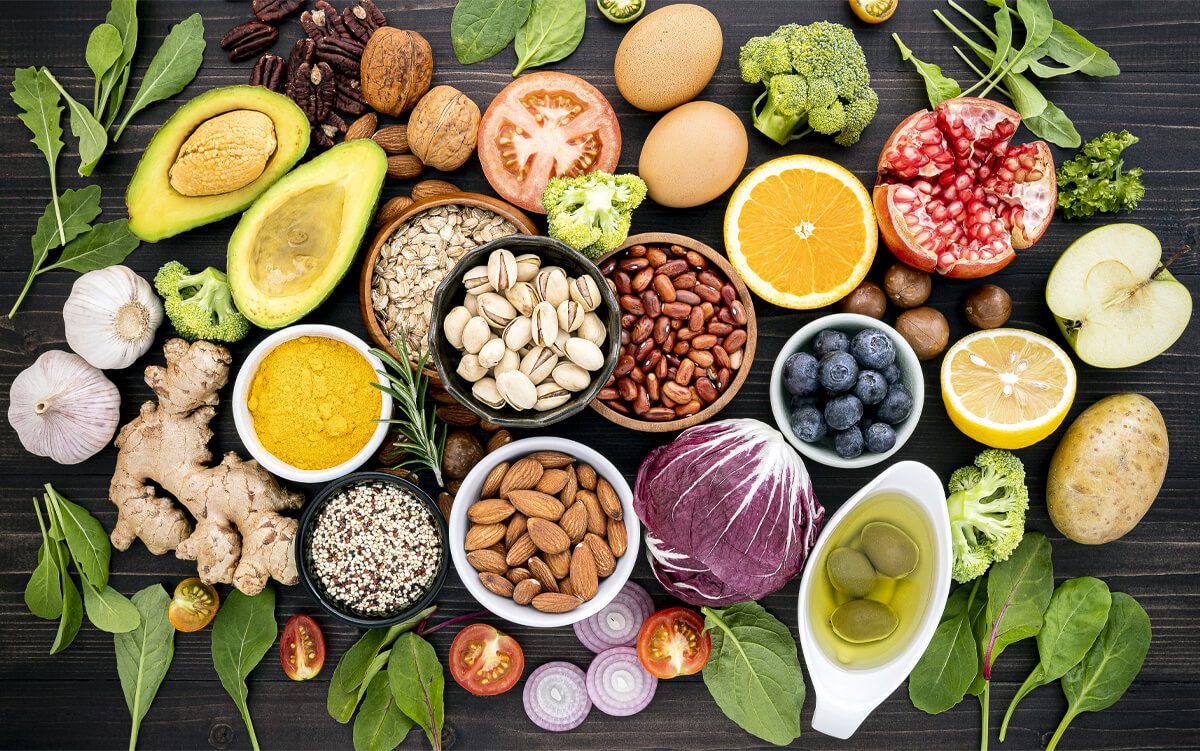The adoption of a plant-based diet is ever increasing as the infinite list of benefits becomes more clear through research and personal experience. Whether it is decreasing greenhouse gas emissions or to consume more fiber and lower cholesterol, there are many reasons why someone might consider eliminating ultra-processed foods along with meat and dairy products. A plant-based diet consists of plant foods that are in their natural form and have undergone little-to-no processing. Nuts, beans, seeds, vegetables, fruits all contain not one, but an abundance of nutrients and benefits.
What’s all the hype about?
Nutrient-dense meals are the best choices for optimal nutrition, which is certain to be achieved if the meal is based on plants! All plants contain a variety of vitamins and minerals. Eating meals full of plants means becoming full with regular portion sizes, optimal nutrient levels, and maintaining a healthy weight.
How does a plant-based diet affect the #1 killer in the U.S.? It eliminates it. Plant-based nutrition is the ONLY diet proven to reverse heart disease! Along with CVD, research suggests improvements in:
Dementia
Alzheimer’s
High Cholesterol
Fatty-liver disease
Lung disease
Cancer
Kidney Disease
Type II Diabetes
Things to consider:
-Vitamin B12 supplement is the only nutrient that must be supplemented. This can be done in vitamin form or in milks such as rice, almond, oat, or cashew milk.
-Fruits and vegetables contain lots of water, and will quickly make you full. Be sure to regularly hydrate throughout the day to achieve around 8 – 11 8-oz. cups of water to avoid dehydration.
-Get a variety of macronutrients by choosing from fats of avocado, nuts, and seeds. Get carbohydrates and fiber from grains such as oats, quinoa, barley, and brown rice. Achieve both fruits and vegetables by adding your favorites to meals in new ways!
Tips and suggestions:
*The free app “Daily Dozen” provides a checklist and suggestions in the various groups of berries, vegetables, grains, nuts, and water to display what you are getting enough of and what you need more of in your day of eating.
Breakfast:
2 tablespoons chia seeds + 1 cup of almond milk = chia seed pudding
½ baked sweet potato + 2 Tbsp almond butter + ¼ cup berries = sweet potato toast
Lunch:
Chickpea Quinoa Bowl
Dinner:
*Personal favorite: Southwestern Avocado Salad
Dressing
· 1 avocado, halved
· 1 clove garlic
· ½ teaspoon salt
· ½ teaspoon pepper
· ¼ cup olive oil
· 1 tablespoon fresh cilantro
· 1 lime, juiced
Salad
· 1 head lettuce, chopped
· 1 cup bell pepper, chopped
· ¼ cup fresh cilantro
· 15 oz black beans, 1 can
· ½ cup red onion, chopped
· 15 oz corn, 1 can
· ¼ cup scallion
· ¾ cup tomato, chopped
Directions:
1. Add all dressing ingredients to a blender, blend until smooth.
2. In a large bowl add lettuce, peppers, cilantro, beans, onion, corn, green onion, and tomatoes.
3. Top with prepared dressing; toss to coat.
Begin your journey today!
Recipes:
Chickpea Quinoa bowl: https://www.purplecarrot.com/plant-based-recipes/chickpea-quinoa-bowl-with-roasted-broccoli-creamy-almond-dressing
Soutwestern salad: https://tasty.co/recipe/southwestern-salad-with-avocado dressing

